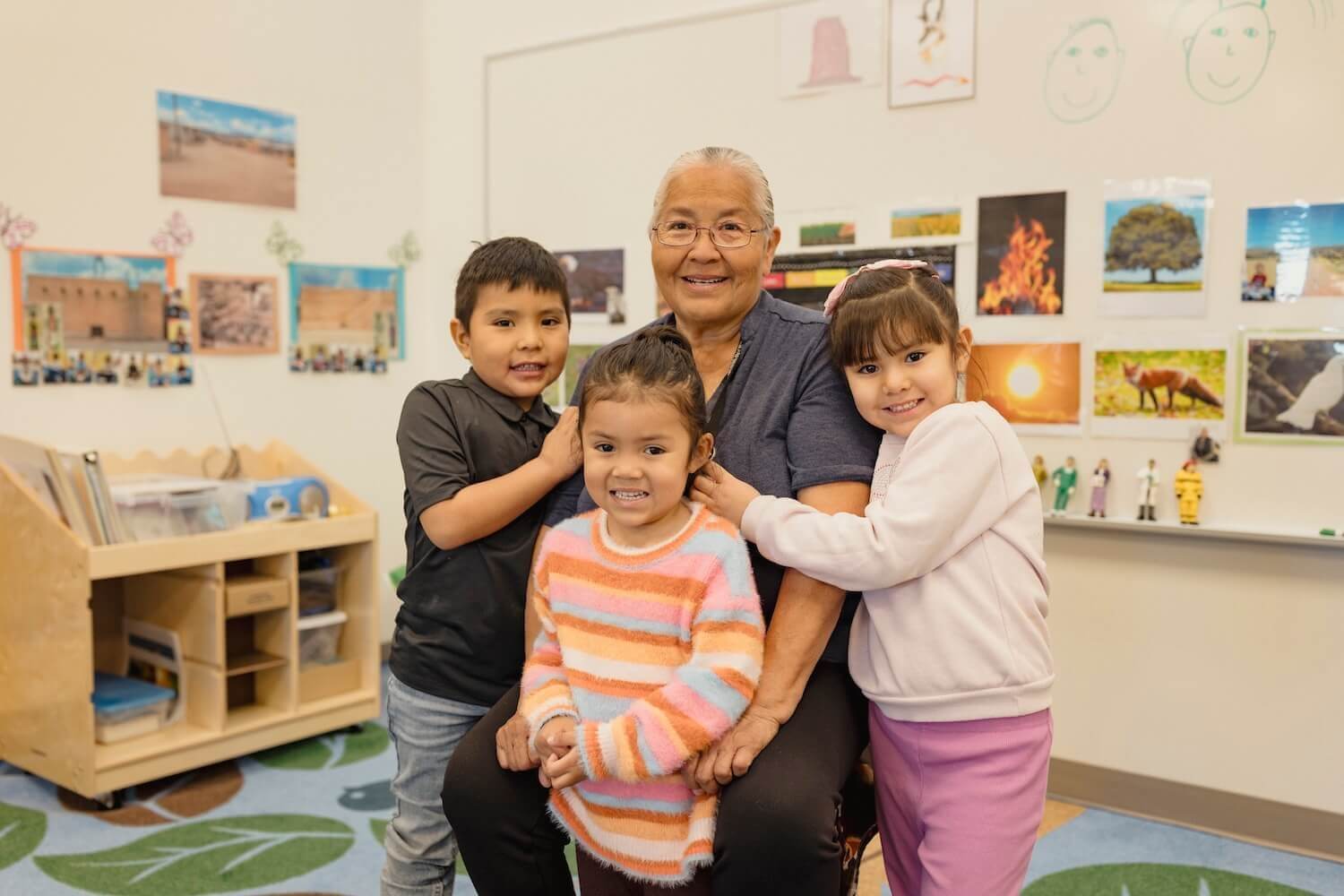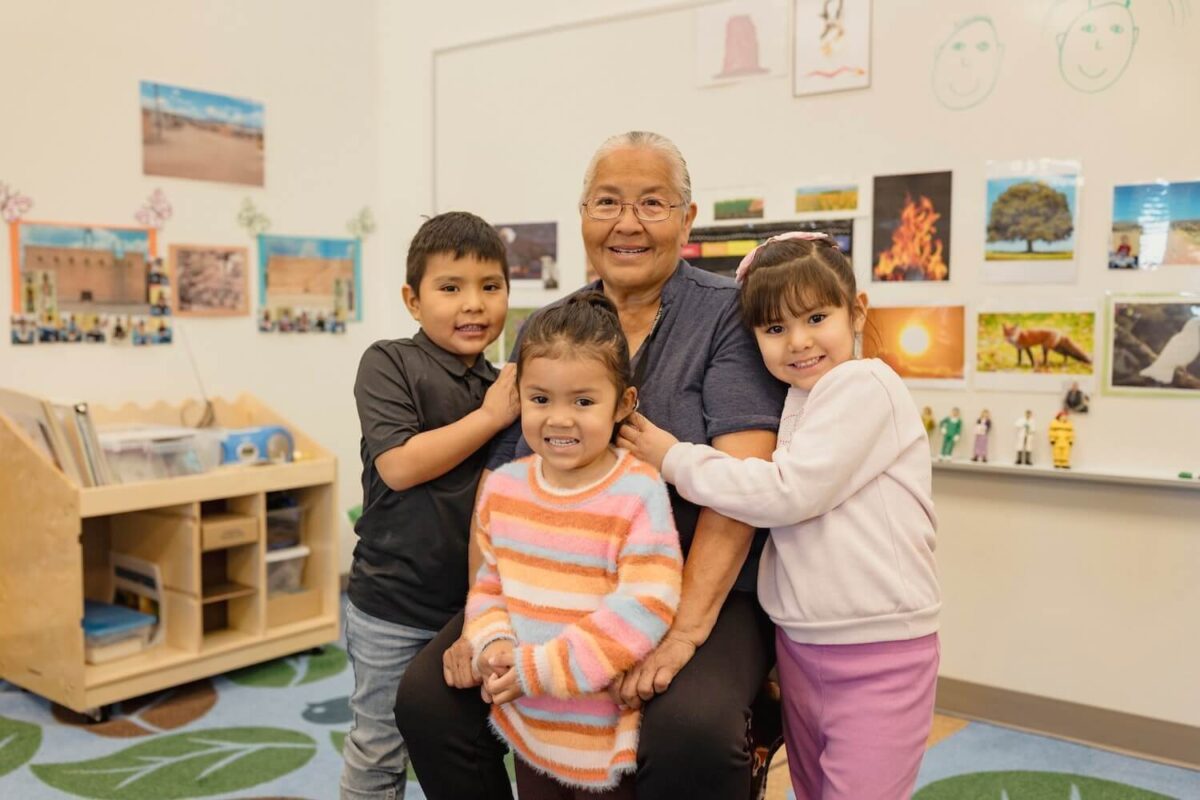
To Sustain a Language, Teach it to the Children
In Jacqueline Toledo-Magdalena’s Head Start classroom, all the teaching happens in the language of Jemez Pueblo. The students learn through traditional activities such as making cornmeal, or by attending and observing cultural activities in their village.
“We’re out there exploring, investigating, how did this grow? Why did that grow?” Jacqueline said. So, we’re actually teaching outside, and then most of all, we’re teaching within our culture.”
Jacqueline has taught for more than 25 years at Walatowa Head Start, the Head Start of Jemez Pueblo. Recognized as a national leader in Indigenous early childhood education, Walatowa Head Start was one of the first Tribal Head Start programs to teach entirely in their language, which can be called Jemez, Towa, or Hemish. And although the Walatowa program is a leader, they aren’t the only one. Across New Mexico there are Tribes, Pueblos and Nations offering early childhood programs that support children’s development in their traditional languages, often through their Tribal Head Start programs. These programs are great for children’s development, and for ensuring languages are not lost with time.
The early years of life are a critical time for children’s language learning. Most brain growth happens in the first five years of life, which is when children first learn the languages of their families and communities. Teaching children their traditional languages during their earliest years can help set them on a path toward speaking fluently, allowing them to communicate with elders and eventually pass the language on to others.
Learning their families’ heritage languages is important for all children, and can be especially important for Indigenous communities, whose languages may not have written form and may be spoken only by one village or community. In many cases, Native languages have been systematically undermined by assimilation policies, and early childhood language revitalization is a key strategy for keeping New Mexico’s rich Tribal languages and cultures alive for many more generations.
For Jacqueline, 25 years at Walatowa Head Start has meant a legacy of graduates who go on to become adults in the community. “It helps out a lot in the long run, that maybe this child will be the person that’s going to help the elders who don’t understand the English language, how to better understand what’s going on,” she said. “And to be the future governors and to keep on using our traditional Hemish language.”

